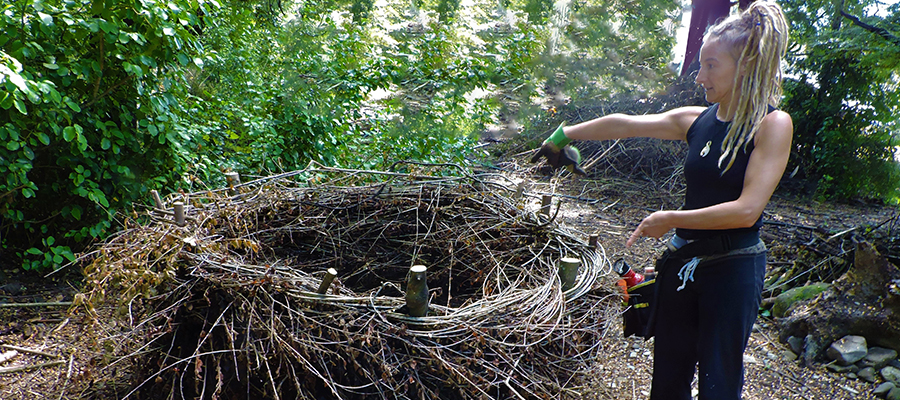
Staveley Camp Forest; rejuvenation of a “little jewel”
Thanks to a group of dedicated volunteers, the future looks great for a small piece of remnant forest in Mid-Canterbury. The nine-hectare Staveley Camp Forest could until recently be described as somewhat unloved due to its takeover by weeds.
Among the major invaders in the predominantly black beech forest are ivy, cotoneaster and sycamore. The forest on private QE2 covenanted land is part of Staveley Camp, used by a wide variety of community groups, from schools and churches through to search and rescue, meditation and patchwork groups.
Determined effort
Work in the past has helped the forest survive, and now a determined effort has begun which has already rejuvenated both the forest and the weedbusters themselves.
The Staveley Camp Committee (part of the national Weedbusters network, which is supported by Environment Canterbury) asked for the forest to be covenanted and applied for funding to cut the weeds. The group held its first major weedbusting weekend toward the end of 2018, during which around one hundred people from Mid-Canterbury and as far afield as Christchurch took part.
Organiser Gen de Spa said she was pleased to see the results so quickly: “An area of more than 100 square meters which was covered in ivy is now clear of the weed, as well as a lot of cotoneaster. The workplan for the weekend involved an area large enough for the weedbusting to be worthwhile and not so big as to be utterly overwhelming.
“Seeing the change and seeing it so quickly showed the volunteers that they had really made a difference. As a result, they got a real sense of purpose. Everyone enjoyed themselves. Being together and achieving something was great.”
She said as well as weed-pulling and cutting, some poisoning was required to stop the regeneration of weeds, although the long-term plan is not to need to use poison. Planting projects and bi-monthly working bees are also planned.
A weed-related weaving workshop was also a feature of the weekend. Volunteers learned how to weave sycamore and cotoneaster waste into compost bins. The large woven bins will be used as biodegradable containers for weeds and food scraps from the camp. Gen said: “It’s all part of the permaculture approach to maintaining and growing the forest.”
Rejuvenation and collaboration
Gen said the gathering, which was named a “rejuvenation weekend”, looks to be the first of many. She hopes it will be a place people come for personal rejuvenation as well. Part of the area cleared has been turned into a meditative space with artworks made from weeds.
The weekend was a collaboration with related groups, including the Mid-Canterbury Time Bank and the Staveley Camp committee. Gen said it showcased how the give-and-take exchange of time banking works and can continue to work in the case of the forest with activities such as stargazing, dance and meditation workshops.
She said the plan is also to encourage locals to reconnect with the forest: “It’s a little jewel – a priceless treasure that a lot of people don’t know about, right on their doorsteps.” Gen said the Staveley Forest Action Group is poised for a great future.
To find out more about Weedbusters or to join your local group, visit www.weedbusters.org.nz.
